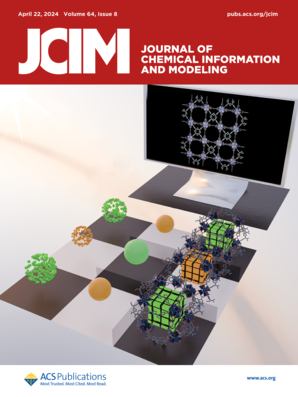Heterogeneous Graph Contrastive Learning with Graph Diffusion for Drug Repositioning.
IF 5.6
2区 化学
Q1 CHEMISTRY, MEDICINAL
引用次数: 0
Abstract
Drug repositioning, which identifies novel therapeutic applications for existing drugs, offers a cost-effective alternative to traditional drug development. However, effectively capturing the complex relationships between drugs and diseases remains challenging. We present HGCL-DR, a novel heterogeneous graph contrastive learning framework for drug repositioning that effectively integrates global and local feature representations through three key components. First, we introduce an improved heterogeneous graph contrastive learning approach to model drug-disease relationships. Second, for local feature extraction, we employ a bidirectional graph convolutional network with a subgraph generation strategy in the bipartite drug-disease association graph, while utilizing a graph diffusion process to capture long-range dependencies in drug-drug and disease-disease relation graphs. Third, for global feature extraction, we leverage contrastive learning in the heterogeneous graph to enhance embedding consistency across different feature spaces. Extensive experiments on four benchmark data sets using 10-fold cross-validation demonstrate that HGCL-DR consistently outperforms state-of-the-art baselines in both AUPR, AUROC, and F1-score metrics. Ablation studies confirm the significance of each proposed component, while case studies on Alzheimer's disease and breast neoplasms validate HGCL-DR's practical utility in identifying novel drug candidates. These results establish HGCL-DR as an effective approach for computational drug repositioning.基于图扩散的异构图对比学习药物重定位。
药物重新定位确定了现有药物的新治疗应用,为传统药物开发提供了一种具有成本效益的替代方案。然而,有效地把握药物与疾病之间的复杂关系仍然具有挑战性。我们提出了HGCL-DR,一种用于药物重新定位的新型异构图对比学习框架,通过三个关键组件有效地集成了全局和局部特征表示。首先,我们引入了一种改进的异构图对比学习方法来模拟药物-疾病关系。其次,在局部特征提取方面,我们在药物-疾病二部关联图中采用带有子图生成策略的双向图卷积网络,同时在药物-药物和疾病-疾病关系图中利用图扩散过程捕获远程依赖关系。第三,对于全局特征提取,我们利用异构图中的对比学习来增强不同特征空间的嵌入一致性。在四个基准数据集上使用10倍交叉验证的广泛实验表明,HGCL-DR在AUPR、AUROC和f1评分指标方面始终优于最先进的基线。消融研究证实了每种成分的重要性,而阿尔茨海默病和乳腺肿瘤的案例研究证实了HGCL-DR在识别新型候选药物方面的实际效用。这些结果表明HGCL-DR是计算药物重新定位的有效方法。
本文章由计算机程序翻译,如有差异,请以英文原文为准。
求助全文
约1分钟内获得全文
求助全文
来源期刊
CiteScore
9.80
自引率
10.70%
发文量
529
审稿时长
1.4 months
期刊介绍:
The Journal of Chemical Information and Modeling publishes papers reporting new methodology and/or important applications in the fields of chemical informatics and molecular modeling. Specific topics include the representation and computer-based searching of chemical databases, molecular modeling, computer-aided molecular design of new materials, catalysts, or ligands, development of new computational methods or efficient algorithms for chemical software, and biopharmaceutical chemistry including analyses of biological activity and other issues related to drug discovery.
Astute chemists, computer scientists, and information specialists look to this monthly’s insightful research studies, programming innovations, and software reviews to keep current with advances in this integral, multidisciplinary field.
As a subscriber you’ll stay abreast of database search systems, use of graph theory in chemical problems, substructure search systems, pattern recognition and clustering, analysis of chemical and physical data, molecular modeling, graphics and natural language interfaces, bibliometric and citation analysis, and synthesis design and reactions databases.

 求助内容:
求助内容: 应助结果提醒方式:
应助结果提醒方式:


